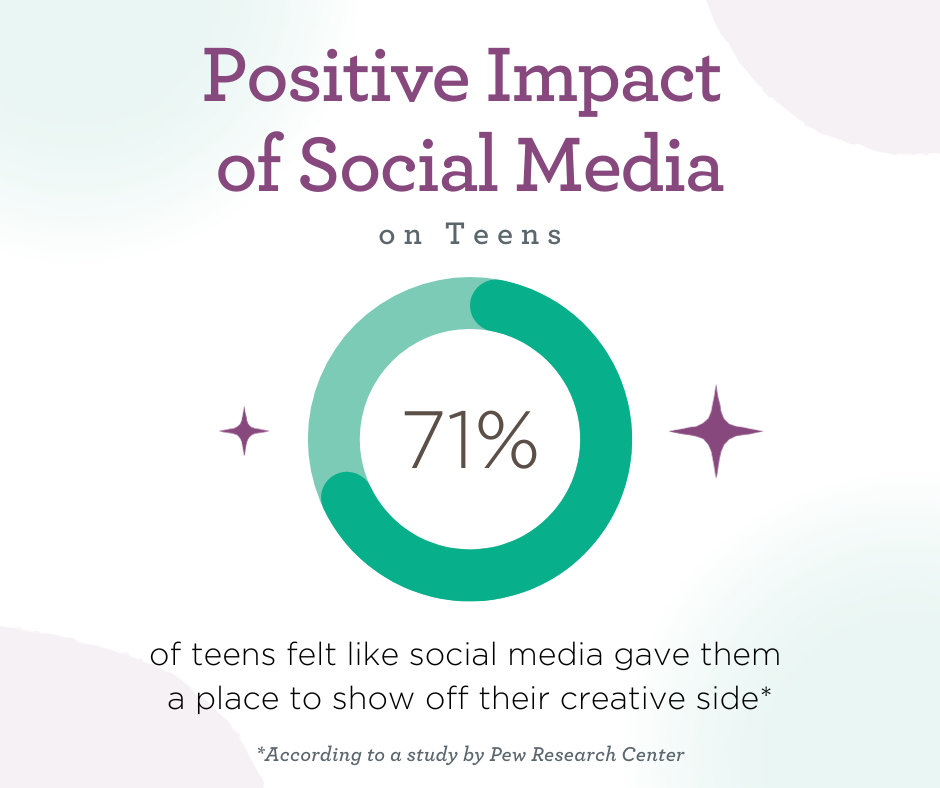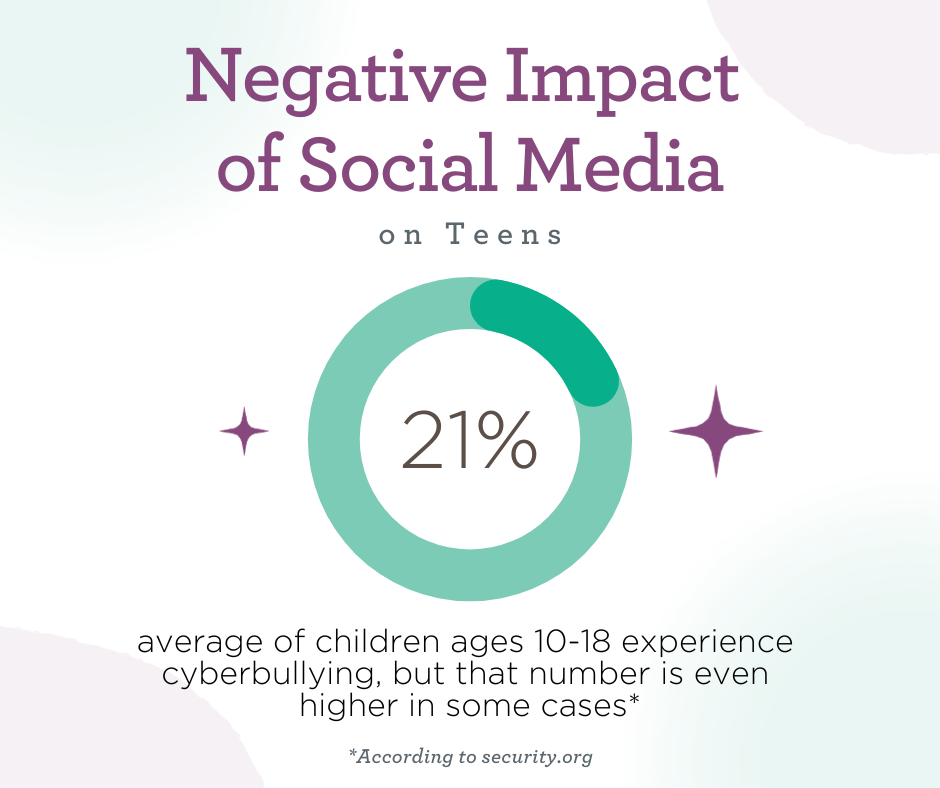Social Media and Suicide Risk in Teens: What Caregivers Need to Know

With technology thoroughly integrated into our everyday lives, social media has become a normal part of our daily routines. Social media has many positive aspects, like the opportunity to stay current on what’s new with family and friends. But it has many downsides too, especially for teens: social media can negatively impact mental health, self-esteem and overall wellbeing.
Caregivers can help teens use social media in a way that’s smart and safe. Therefore, reducing the risks that technology poses for mental health. September is National Suicide Awareness Month, and we’re shedding light on the link between social media usage in teens and mental health struggles, depression and suicide risk. Get to know why social media can lead to suicide risk, the warning signs of suicide risk — and gain insights to minimize the risk and maximize connection.
The Impact of Social Media on Teens
Most adults agree: It’s too easy to get lost in the endless scrolling in our digital world of constant connection. Research indicates that the more we scroll, the more we keep scrolling . . . it’s called a “rabbit hole” for a reason!
And with how hard it is for adults to log off, imagine how much more challenging it can be for teens, whose brains are still developing. Extreme social media use can look a lot like addiction. While there are undoubtedly many significant benefits to gain from technology, there are also alarming drawbacks for teenagers and their developing brains.
Positive Impact of Social Media on Teens
On the positive side, social media helps teens stay connected to friends and family while also providing a way to develop new friendships. Research suggests that around 62% of teens share their usernames when meeting new friends to stay connected. And social media can positively foster a sense of belonging and support. For teens who struggle to find their community and feel accepted, social media provides pathways to engage with people with common interests.
 As teens discover themselves, including interests, passions and talents, social media provides a creative outlet and a way to explore. On platforms like Pinterest, Instagram, TikTok and YouTube, teens can enjoy self-expression through artistic outlets, like dancing, vision boards, collages, blogs, vlogs and photography. According to a recent study, 71% of teens felt like social media gave them a place to show off their creative side.
As teens discover themselves, including interests, passions and talents, social media provides a creative outlet and a way to explore. On platforms like Pinterest, Instagram, TikTok and YouTube, teens can enjoy self-expression through artistic outlets, like dancing, vision boards, collages, blogs, vlogs and photography. According to a recent study, 71% of teens felt like social media gave them a place to show off their creative side.
Negative Impact of Social Media on Teens
While social media can offer healthy connections and avenues for self-expression, the negative side can be truly harmful. The numbers tell a startling story:
- Research shows that close to 81% of teens in America use social media consistently and 24% are constantly connected.
- YouTube is the platform most commonly used by teens, with 95% of those ages 13 to 17 saying they have ever used it. Two-thirds of teens report using TikTok. Followed by roughly six in ten who say they use Instagram (62%) and Snapchat (59%).
- Most teens spend between 16 and 62 hours a week online (often contributing to teens getting less sleep than they need). And all that digital time can lead to teens having feelings of inadequacy.
- More than half of teens say it would be difficult to give up social media, with non-school-related screen time doubling from pre-pandemic estimates.
Impact on Self-Esteem
Research has linked several aspects of social media use to depression and a heightened risk of suicide. One trigger can be the carefully curated lives presented on social platforms. This can cause teens to compare their lives with online representations and negatively affect their self-esteem. A study on Instagram shows that teens who follow strangers are more likely to be involved in social comparisons leading to depression than those who follow only friends, and social media frequently makes teens lonelier.
Another study illustrates that the content posted by peers and role models presented norms for mental health and happiness that distorted perceptions about their own mental health. The emphasis on positive emotions, achievements and exciting events was such a stark contrast for teens who were struggling. And when they compared their lives with the seemingly “perfect” lives projected by peers on social media, those negative emotions were even further reinforced.
Cyberbullying
Think interactions through a screen are less impactful than face-to-face? Think again. Research shows that interactions with peers on social media affect teens’ moods just as much as real-life engagement.
Perhaps the most significant negative impact on teens using social media is the prevalence of cyberbullying. Cyberbullying includes intentional attacks or bad behavior against another teen with the use of online platforms. It’s bullying amplified since social media reaches more people and can be much harder to control.
 Research shows an average of 21% of children ages 10-18 experience cyberbullying, but that number is even higher in some cases. Not only does this cause emotional distress, but it has been linked to an increased likelihood of self-harm and suicide or thoughts of suicide in teens.
Research shows an average of 21% of children ages 10-18 experience cyberbullying, but that number is even higher in some cases. Not only does this cause emotional distress, but it has been linked to an increased likelihood of self-harm and suicide or thoughts of suicide in teens.
And with suicide as the second-leading cause of death for young people ages 15 – 24 (increasing by nearly 60% from 2007 to 2018), we must do everything possible to minimize the risks.
Warning Signs That Your Teen is Struggling
Especially because social media can glamorize psychologically disordered behavior, caregivers must be aware of the warning signs that their teen is struggling. Your teen might be struggling if you notice:
- Drastic Change in Emotions: Teenage mood swings are not unusual, but dramatic changes can be a warning sign, especially severe sadness, anger, fear or embarrassment.
- Withdrawing: Spending more time alone, disengaging from activities they previously enjoyed or increased isolation can be major warning signs that something is amiss with teens.
- Trouble in School: Especially in cases of cyberbullying, teens may try to avoid school, have trouble concentrating and begin struggling with their grades.
- Physical Effects: Teens may show physical signs of upset including headaches, stomachaches and sleeping problems.
- Psychological Effects: As negative online behavior persists, symptoms such as anxiety, depression, suicidal thoughts or suicide can occur, and immediate attention is needed.
With all the changes teenagers go through, it can be difficult to identify when your teen is experiencing some negative effects of social media. While social interaction is key to every young person’s growth and development, social media platforms often cultivate the wrong kind of interaction. Remember, teens often need help communicating and could need a caregiver or professional intervention.
For assistance with suicidal thoughts or thoughts of self-harm, call the suicide lifeline at 988 for 24/7 help. You can also help teens create healthy social media usage to lower suicide risks.
Tips to Encourage Healthy Social Media Usage with Your Teens
To help teens learn how to use social media in a way that’s healthy, it takes all of us — caregivers and parents, educators, mentors and more!
Here are some tips to foster smart digital habits:
- Education and Awareness: A great start is educating teenagers about the potential risks of excessive social media use and screen time, such as cyberbullying, online harassment and unrealistic expectations. Encourage them to be mindful of their online behavior and the impact their social media presence and footprint can have on others.
- Set Limits: Help your teen establish healthy boundaries. Encourage them to have designated screen-free times and places, like while eating and before bedtime. Setting limits will promote a balanced lifestyle and prevent social media from becoming all-consuming.
- Encourage Offline Activities: Encourage teens to engage in activities not involving social media. Motivate them to pursue hobbies, sports or spend time with friends in person. The goal is to promote a healthy balance between online and offline activities. This helps teens develop a well-rounded lifestyle.
- Be a Role Model: As adults, it is essential to lead by example. Teens are more likely to emulate positive behaviors when they see them practiced by the adults in their lives! Show teenagers how to use social media responsibly and in moderation. Practice healthy social media habits yourself, such as not constantly checking your phone.

- Encourage Open Communication: Create a safe and non-judgmental environment where teenagers feel comfortable discussing their online experiences. Encourage them to share any concerns or issues they may face on social media. By fostering open communication, you can provide guidance and support when needed.
- Teach Critical Thinking: Help teenagers develop critical thinking skills to distinguish between real and fake news, scams and harmful online content. Encourage them to question the authenticity of information they find and teach them how to use credible sources.
- Promote Positivity and Kindness: Motivate teens to use social media as a tool for spreading positivity and kindness. Words have power, and we can teach young people how their online behavior can impact others. Encourage them to think before they post, comment or share anything online.
- Monitor and Supervise: Finally, while it’s important to give teenagers some freedom, it is equally important to monitor their online activities. Keep an eye on their social media accounts, friend lists and the content they are watching, reading and sharing. This will help identify any potential issues and allow for any intervention if necessary.
Setting the Roadmap to Responsibly Engage with Social Media
Encouraging healthy social media habits is one major way that caregivers can support their teen’s overall wellbeing and future success. By promoting these tips and staying ahead of the game. We can help teenagers responsibly navigate the digital world and ensure that social media becomes a positive and enriching experience for them throughout their lives.
If you suspect social media is causing any of the negative effects listed above and would like to begin individual or family therapy, get in touch with KVC Kentucky and learn more about our services.

